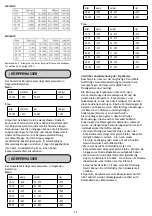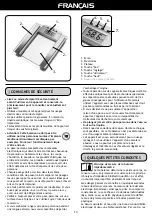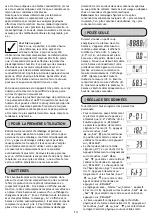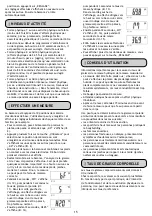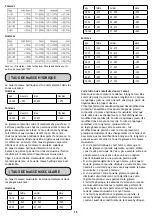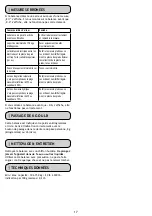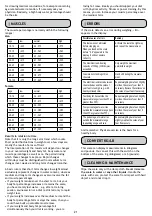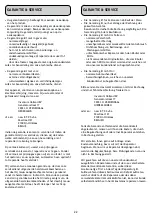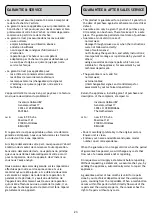
for drawing medical conclusions, for example concerning
age-related water retention. If necessary ask your
physician. Basically, a high body water percentage should
be the aim.
The muscle percentage is normally within the following
ranges:
man
Age
low
normal
high
10-14
< 44%
44 - 57%
> 57%
15-19
< 43%
43 - 56%
> 56%
20-29
< 42%
42 - 54%
> 54%
30-39
< 41%
41 - 52%
> 52%
40-49
< 40%
40 - 50%
> 50%
50-59
< 39%
39 - 48%
> 48%
60-69
< 38%
38 - 47%
> 47%
70-100
< 37%
37 - 46%
> 46%
female
Age
low
normal
high
10-14
< 36%
36 - 43%
> 43%
15-19
< 35%
35 - 41%
> 41%
20-29
< 34%
34 - 39%
> 39%
30-39
< 33%
33 - 38%
> 38%
40-49
< 31%
31 - 36%
> 36%
50-59
< 29%
29 - 34%
> 34%
60-69
< 28%
28 - 33%
> 33%
70-100
< 27%
27 - 32%
> 32%
Results in relation to time
note that it is only the long-term trend which counts.
Short period fluctuations in weight over a few days are
mostly the result of a loss of fluid.
The interpretation of the results will depend on changes
in your: overall weight and body fat, body water and
muscle percentages, as well as on the period during
which these changes take place. rapid changes
within days must be distinguished from medium term
changes (over weeks) and long term changes (months).
A basic rule is that short term changes in weight almost
exclusively represent changes in water content, whereas
medium and long term changes may also involve the fat
and muscle percentages.
• If your weight reduces over the short term, but your
body fat percentage increases or remains the same,
you have merely lost water – e.g. after a training
session, sauna session or a diet restricted only to rapid
weight loss.
• If your weight increases over the medium term and the
body fat percentage falls or stays the same, then you
could have built up valuable muscle mass.
• If your weight and body fat percentage fall
simultaneously then your diet is working – you are
losing fat mass. Ideally you should support your diet
with physical activity, fitness or power training. By this
means, you can increase your muscle percentage over
the medium term.
If the scale detects an error during weighing, «Err»
appears in the display.
possible causes of errors
remedy
The scale was not activated
before stepping on.
When you stand on the scale
before “0.0“ appeared in the
display, it will not operate
correctly.
Activate the scale the right way
and repeat the measurement.
The maximum load-bearing
capacity of 150 kg (330 lbs) was
exceeded.
Only weigh the maximum
permissible weight.
You were not standing still on
the scale.
Stand still during the measure-
ment.
The electrical resistance between
the electrodes and the soles of
your feet is too high (e.g. with
heavily callused skin).
repeat weighing barefoot. Slightly
moisten the soles of your feet if
necessary. remove the calluses on
the soles of your feet if necessary.
Your body fat lies outside the
measurable range (less than 5% or
greater than 50%).
repeat weighing barefoot. Slightly
moisten the soles of your feet if
necessary.
Your percentage of water lies
outside the measurable range (less
than 25% or greater than 75%).
repeat weighing barefoot. Slightly
moisten the soles of your feet if
necessary.
The percentage of muscle lies
outside the measurable range
(depending on age and sex).
repeat weighing barefoot and
slightly moisten the soles of your
feet if necessary.
And remember: Physical exercise is the basis for a
healthy body.
This scale can display measurements in kilograms
and pounds. You can set this with the switch on the
bottom of the scale. Kg (kilograms) or Lb (pounds).
Wipe the scale only with a damp cloth.
never immerse
the scale in water or any other liquids.
Handle the
scale with care, protect the scale from impact with hard
object and do not drop it.
| muscLes
| errors
| convert kg/Lb
| cLeAning & mAintenAnce
21





